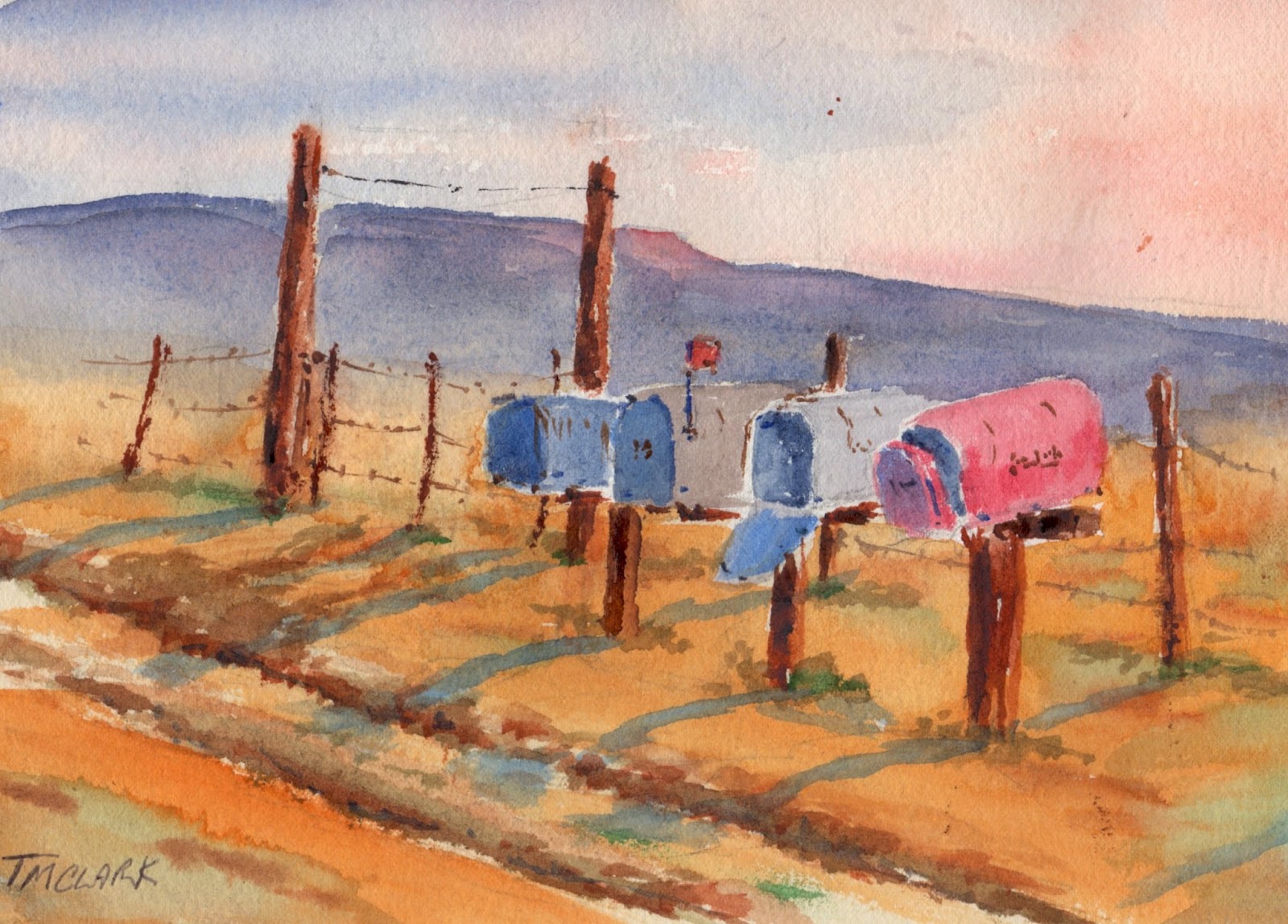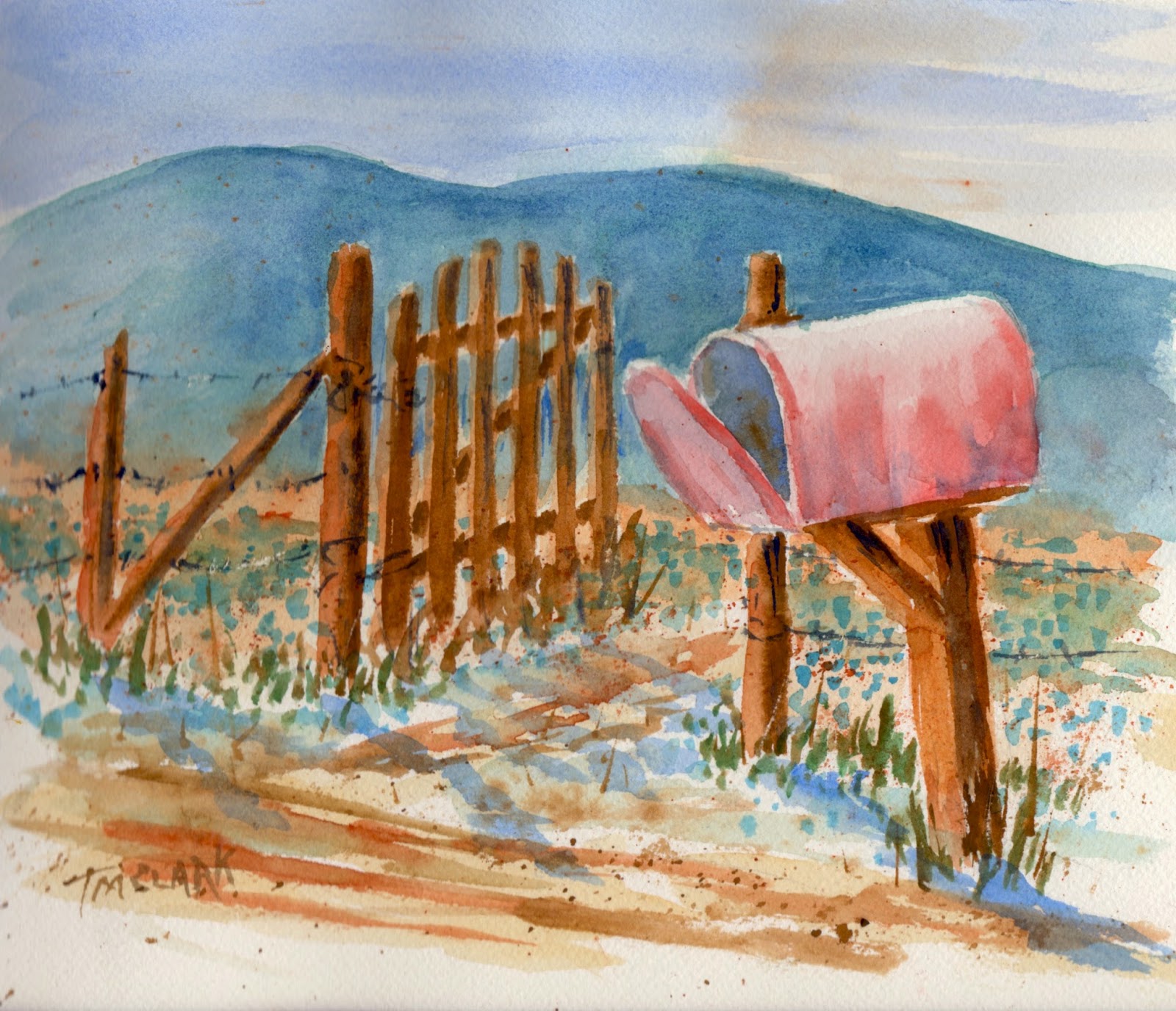 |
| On the trail up Black Mesa, about a mile and a half into the hike |
Black Mesa, Oklahoma's highest point at the tip of the panhandle, has got to be one of my top two favorite places in the state, along with Monument Hill.
It tells you a lot about me that I like remote places...so remote even cell phones don't work, thank God. So remote you can see a long way, have time to think, listen, smell, imagine, talk to your yourself and hear God answer.
Two years have passed since I made the 361-mile drive and the eight-mile hike, and a year since we went back for a night at Black Mesa Bed and Breakfast, where they hold hands and say grace before breakfast.
It's not just Black Mesa of course, but the whole area, actually in the Mountain time zone.
 |
| Black Mesa from the front porch of Black Mesa Bed and Breakfast |
 |
| Black Mesa sunset, 9 by 12, painted on the porch of the bed and breakfast. |
But mostly you can breathe, really see the stars, and be free.
Here are the links to articles and photos I wrote two years ago on this blog:
(My other favorite places, with no ranking of preference, coming soon, in shorter articles, scattered around the state. included will be three others in the northwest area--the so called Washita "battlefield," the Cimarron river cliffs at Freedom, Fort Reno and its cemetery at El Reno.)






































